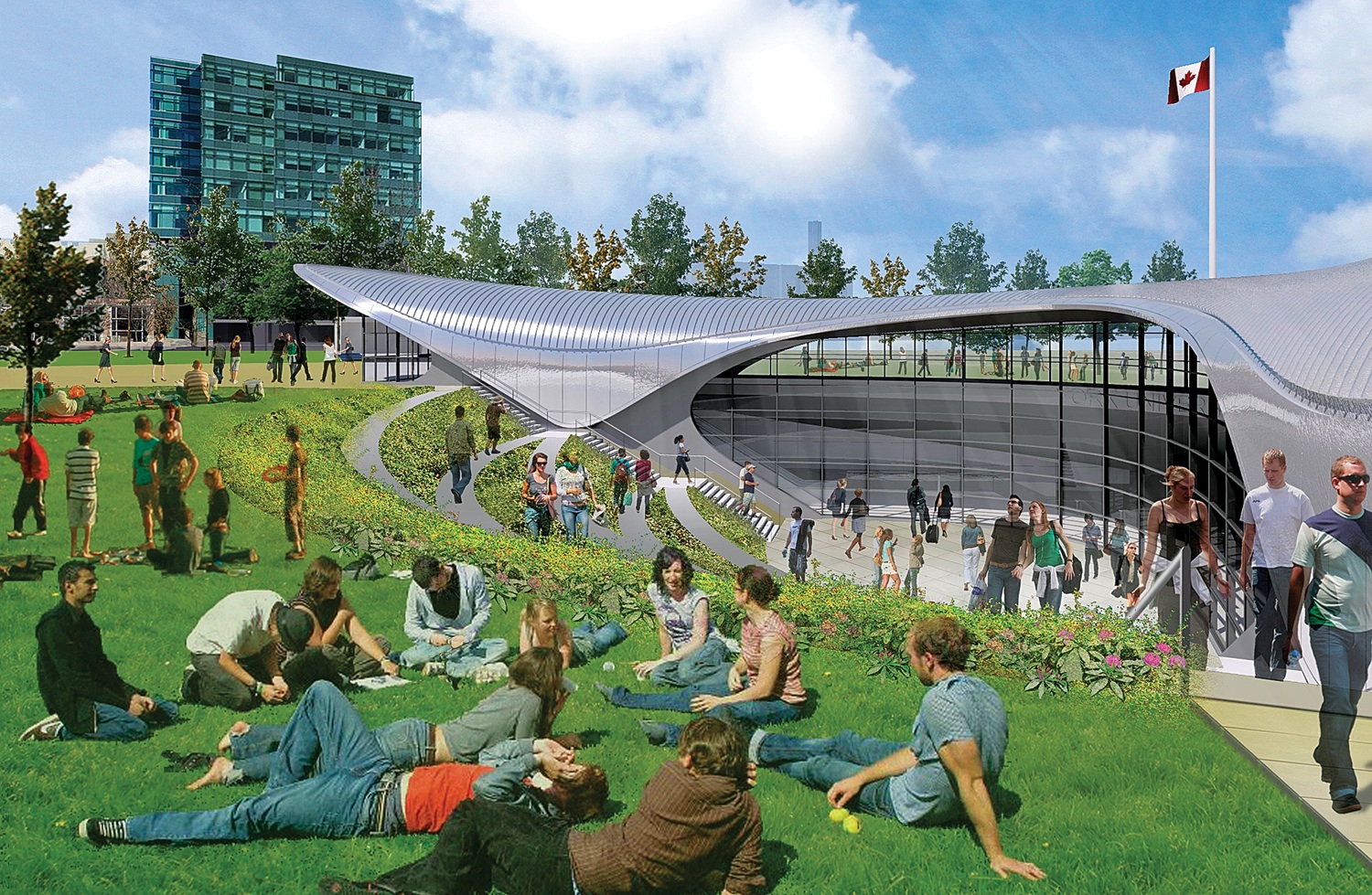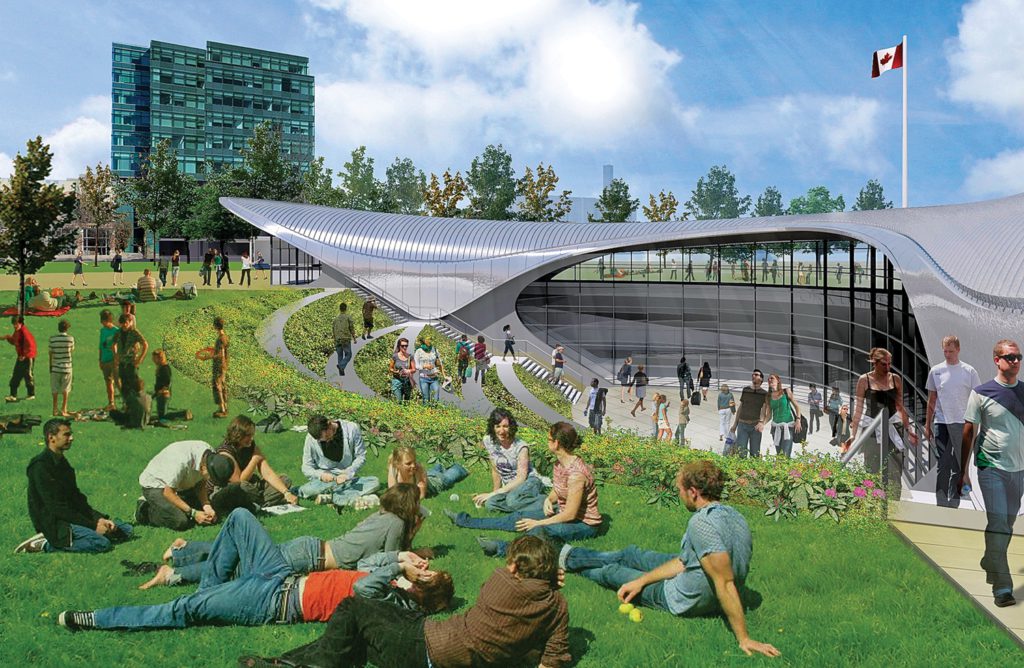Nathan Christie
Contributor
What is it?
York University Station is a TTC subway station currently under development. The station will be located at the east end of the Harry W. Arthurs Common.
The station is part of the planned 8.6-kilometre expansion of the Yonge-University-Spadina subway line, officially called the Toronto-York Spadina Subway Extension Projection (TYSSE). The project began April 1, 2008.
Six subway stations, including the one at York University, will be built north of Downsview Station to a new terminus at the Vaughan Metropolitan Centre in York region. York University will be the third station on the line, just north of the Sheppard West and Finch West stations and south of the Steeles West, Highway 407 and Vaughan Centre stations.
When can we ride it?
The TTC aims to have the station ready by late December 2015. However, take this with a grain of salt, as the TTC projects have been delayed in the past. Take, for example, their ongoing project to repair the Yonge-University-Spadina line, which has been extended to 2013.
What will the station look like?
The design of the building will be done by architecture firm Foster + Partners, known for the sleek steel and glass aesthetic employed in projects like the London Millenium Bridge and The Gherkin. The main station looks like a giant boomerang from a bird’s eye view, but on the ground the curving, handicapped-accessible ramp in front of the building may make you believe you’re in front of an amphitheatre. The roof of the building will be environmentally friendly, as it will reflect sunlight and absorb little heat. The glass walls will be glazed so as to be bird-friendly, as well as allowing natural light to come into the concourse.
Inside, the open, airy concourse level is clad with large, white ceramic wall tiles and grey terrazzo floors. Retail spaces will be set up on both sides, with the fares and turnstiles in the middle of the building. Escalators will then take commuters to the platform level. The station is also fitted with elevator access and bicycle storage.
As with the stations on the Sheppard Line, each station on the extension will have its own distinct aesthetic. Jason Bruges, a London-based artist, has been commissioned to design the visuals for York University Station.
One of his pieces, called “Piston Effect,” will be an array of glass panels with LCD reflecting devices. The array will be positioned over a smoke duct on the east wall of the concourse, and as the air moves past the panels the LCDs will change in tone between black and white, effectively creating a series of electronic images.
In Bruges’ view, the piece will reflect not the station, but its commuters as well. “The arrival and departure of the trains and the passengers and staff all create this flux, creating a generative and random choreography,” Bruges explains. “This will be used as the score or algorithm to control the digital canvas, creating a unique and ever changing real-time four-dimensional artwork.”
Where on campus can we access it?
The main entrance will be on the east end of the Harry W. Arthurs Common, with a sliding-door entrance on each tip of the building, plus elevator access on the south end.
What’s involved in the construction?
The official ground-breaking ceremony for the TYSSE was held on November 27, 2009, but actual construction of the station is not planned until this fall. The TTC has yet to award a contract, but they are aiming for a start date of October 2011, making York University the last of the six new subway stations to be constructed. Construction of Sheppard West and Highway 407 stations have already begun, with the rest to be started sometime over the summer.
The station will be constructed through a method called cut-and-cover, which entails the ground being dug up into a trench, and then roofed with the appropriate supports. In order to accommodate this construction, the area around the Harry W. Arthurs Common will be affected.
The first phase of these detours, already completed last fall, was the paving of a temporary road north-south across the east end of the Common, the widening of a portion of York Boulevard’s south lane, and the construction of another temporary road running along the north side of the Seymour Schulich Building.
The second phase, currently underway, includes a road from the York Boulevard parking lot that will form an intersection with Ian McDonald Boulevard and Vanier Lane. As well, a bus bay is being built just north of the intersection, where Viva, YRT and Zum buses will relocate once construction begins.
Tunneling around York University is expected to start later this year as well. Four tunnel boring machines (TBMs for short) will be used; each is expected to drill 15 metres per day.
What current bus routes will this station replace?
Commuters travelling from Downsview Station will no longer have to take the route 106 or 196 buses to York University. However, these bus routes are expected to remain, albeit with a decrease in service.
The VIVA Orange line will extend only to York University rather than going all the way to Downsview Station, instead connecting with Viva Purple to make one complete line.
Who’s paying for it?
The TYSSE project is unique among TTC endeavours in that it is well-funded; although the price tag at the time of completion will be an estimated $2.63 billion, each level of government has agreed to contribute to one-third of the cost.
The Liberal government of Ontario committed their portion of the $670 million in 2006 and added another $200 million in 2008. The federal Conservative government have just released their first installment, worth $75 million; in total they’ll spend $697 million. The rest will be split by the municipal governments of Toronto and York region, who will pay $526 million and $352 million respectively.
By itself, York University Station is projected to cost an estimated $72,726,126, making it the second most inexpensive station on the list. Only the Sheppard West Station is expected to cost less.
Could the project be scrapped?
The TYSSE may have officially started on an April Fool’s Day, but despite the TTC’s long, sad record of false starts and cancelled projects, it is expected this expansion will be seen through to the end.
While the project was approved during David Miller’s term as mayor, we haven’t heard any opposition from newly elected Rob Ford. Instead, Ford’s TTC plan so far has been concentrated on cutting service to underused bus routes, stopping key light-rail transit routes from the Transit City plan and reallocating those funds to expand the Sheppard subway from Don Mills to Scarborough Town Centre. It has been Ford’s position to favour subways over other means of public transit. “What Toronto needs are more subways,” he said during his mayoral campaign last year. “Subways move 10 times as many people as streetcars and they’re up to three times faster.”
On the municipal level, Dalton McGuinty’s Liberal government regards the expansion as one of the biggest parts of their “MoveOntario 2020” plan, which aims to improve the state of public transit across the province. Conservative MPP Joyce Savoline said of the MoveOntario 2020 announcement that her party would likely have implemented a similar plan.
Federally, there has been no mention of the plan beside the recent commitment to funding.



